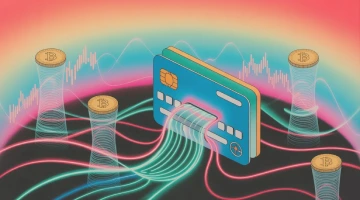How to Boost Blockchain Scalability with Layer 2 Solutions

Blockchain technology has transformed how we perceive data security, transparency, and decentralization. However, as the popularity of blockchain applications grows, so does the strain on their networks.
Many blockchains, including major ones like Bitcoin and Ethereum, struggle with congestion, leading to slower transaction times and higher fees. This is where Layer 2 solutions come into play, offering innovative ways to enhance blockchain scalability without compromising security. Let’s explore various Layer 2 solutions available and how they can help decongest blockchain networks.
What Is Layer 2 Blockchain Scaling Solutions
shTo address blockchain scalability issues, various solutions have been proposed and implemented, categorized into three layers:
- Layer 1 Solutions: These involve changes and improvements to the base blockchain protocol itself. Examples include increasing block size, modifying consensus mechanisms, or implementing sharding to distribute the workload more efficiently across the network.
- Layer 2 Solutions: These are protocols built on top of the existing blockchain, designed to offload some of the transaction processing from the main chain. Layer 2 solutions enable faster and cheaper transactions by creating secondary channels where transactions can occur independently of the main chain.
- Layer 3 Solutions: These emerging protocols are built on top of Layer 2 solutions, that further enhance the usability and scalability of the blockchain ecosystem. They often involve middleware solutions that enable seamless interaction between different blockchain networks and facilitate the complex decentralized applications development.
While each of these layers plays a crucial role in improving blockchain scalability, today we will focus on Layer 2 solutions. Layer 2 scaling solutions are particularly promising as they offer significant improvements in transaction speed and cost without requiring fundamental changes to the underlying blockchain. By offloading transactions from the main chain and processing them in parallel, Layer 2 solutions can effectively decongest the network, making blockchain technology more efficient and accessible for widespread use.
Types of Layer 2 Blockchain Scaling Solutions
Here are some of the prominent types of Layer 2 scaling solutions:
State Channels
A state channel is a two-way communication channel between participants that enables them to perform an arbitrary number of transactions off-chain. The key feature of a state channel is that it only interacts with the main blockchain twice: once when the channel is opened and once when it is closed. This significantly reduces the number of transactions that need to be processed by the blockchain, leading to increased throughput and lower costs.
How State Channels Work
- Opening the Channel: Participants lock cryptocurrency into a multi-signature smart contract on the blockchain, recording the initial state.
- Off-Chain Transactions: Multiple transactions are conducted off-chain, updating the state of the channel. These transactions are instant and involve no on-chain fees, as they are only signed and exchanged between participants.
- Closing the Channel: Participants submit the final state to the blockchain. The smart contract verifies this state and redistributes the locked funds according to the latest agreed balances.
Example: The Lightning Network for Bitcoin
State channels are particularly well-suited for applications requiring frequent interactions between a small group of participants, such as micropayments, Web3 gaming, and decentralized exchanges.
Sidechains
These are separate blockchains that run alongside the main blockchain. They have their own consensus mechanisms and validators, often faster and more efficient than the main chain.
How It Works
- Establishing the Sidechain: A sidechain is set up to function alongside the main chain. It can have its own unique features and rules tailored to specific use cases.
- Asset Transfer: Users transfer assets from the main chain to the sidechain by locking them in a smart contract on the main chain. An equivalent amount of assets is then released on the sidechain, enabling users to utilize them within the sidechain’s environment.
- Transaction Processing: Transactions occur on the sidechain independently of the main chain, allowing for faster and more efficient processing. The sidechain periodically submits summaries or snapshots of its state to the main chain to ensure security and integrity.
- Returning to the Main Chain: To move assets back to the main chain, users lock them on the sidechain, and the corresponding assets are unlocked on the main chain.
Example: Polygon PoS for Ethereum.
Sidechains offer flexibility as they can be customized to meet specific needs. For instance, a sidechain can be optimized for faster transaction speeds, lower fees, or enhanced privacy features. This makes sidechains suitable for various decentralized applications, from financial services to gaming.
Rollups
Rollups are a Layer 2 scaling solution that bundles multiple transactions into a single batch and processes them off-chain, significantly reducing the load on the main blockchain. Rollups submit only the summary or proof of these transactions to the main chain, maintaining security while enhancing scalability.
How It Works
- Transaction Bundling: Multiple transactions are aggregated or "rolled up" into a single batch. This batch is processed off-chain, which significantly reduces the number of transactions the main chain needs to handle.
- Submitting Proofs: Rollups submit a summary or proof of the processed transactions to the main blockchain. There are two main types of rollups:some text
- Optimistic Rollups: Assume transactions are valid by default and only perform computations in case of disputes. If a fraud-proof is presented within a challenge period, the invalid transactions are rolled back.
- ZK-Rollups: Use zero-knowledge proofs to verify the correctness of transactions off-chain before submitting the proof to the main chain. This ensures the integrity of transactions with immediate finality.
- State Commitment: The main chain periodically records the updated state from the rollup, ensuring security and consistency across both layers.
Examples: optimistic rollup – Optimism for Ethereum, zk-rollup – zkSync for Ethereum.
Rollups are ideal for dApps and platforms that require high transaction throughput and low fees without compromising on security. They are particularly suited for DeFi platforms, NFT marketplaces, and other high-frequency trading environments where scalability and cost-efficiency are paramount.
Plasma
Plasma is a framework that allows for creating child chains, smaller copies of the main blockchain. These child chains handle the most transactional load, periodically submitting checkpoints to the main chain. This ensures that the main chain remains secure and less congested.
How It Works
- Creation of Plasma Chains: Plasma chains are created as smaller, secondary chains that operate in parallel to the main blockchain.
- Transaction Processing: Transactions are conducted on Plasma chains independently of the main chain. This allows high throughput and efficient processing as the main blockchain is not involved in every transaction.
- Periodic Checkpointing: Plasma chains periodically commit summaries or "snapshots" of their state to the main blockchain. This process, called checkpointing, ensures the integrity and security of the Plasma chain’s transactions.
- Dispute Resolution: If a dispute arises, users can challenge the validity of transactions by submitting fraud proofs to the main blockchain. The main chain then resolves the dispute based on the submitted proofs.
- Withdrawing Assets: Users can withdraw their assets from the Plasma chain by submitting an exit transaction to the main blockchain. The exit process includes a challenge period during which any fraudulent exits can be contested.
Example: OMG Network for Ethereum.
Plasma is particularly suitable for applications requiring high throughput and scalability, such as decentralized exchanges, payment networks, and gaming platforms. Its ability to handle complex transactions off-chain while periodically committing to the main chain makes it ideal for environments where transaction speed and efficiency are critical.
Why Layer 2 Solutions are the Right Choice for Your Crypto Project Development
Layer 2 solutions are becoming the preferred choice for crypto project development due to their ability to significantly enhance the scalability, speed, and cost-efficiency of blockchain networks. Here are several reasons why integrating Layer 2 solutions into your crypto project can be highly beneficial.
What Do Layer 2 Blockchain Scaling Solutions Provide?
Enhanced Scalability
Layer 2 solutions enable blockchains to process a much higher number of transactions per second (TPS) compared to Layer 1. By offloading transactions from the main chain, these solutions prevent congestion and ensure that the network can handle increased usage without compromising performance.
Reduced Transaction Costs
One of the major bottlenecks for widespread blockchain adoption is the high transaction fees on congested networks. Layer 2 solutions alleviate this by processing transactions off-chain or in batches, significantly lowering the costs for end-users. This makes blockchain technology more accessible and practical for everyday use.
Faster Transaction Speeds
Layer 2 solutions provide near-instant transaction finality by minimizing the need for extensive on-chain confirmations. This speed is crucial for decentralized applications like DeFi platforms, GameFi projects, and micropayments, where quick and efficient transaction processing is essential for a seamless user experience.
Increased Privacy
Certain Layer 2 solutions, such as state channels, offer enhanced privacy by keeping transaction details off the main chain. This ensures that sensitive information is not broadcast to the entire network, making Layer 2 solutions ideal for applications requiring confidentiality.
Versatility and Flexibility
Layer 2 solutions can be tailored to specific needs and use cases, allowing developers to implement custom features and consensus mechanisms. This versatility is beneficial for creating specialized dApps, such as private enterprise solutions, high-frequency trading platforms, and more.
Incorporating Layer 2 solutions into your crypto project development can unlock significant benefits, making your decentralized application more scalable, cost-effective, and user-friendly. By addressing the limitations of Layer 1 blockchains, Layer 2 solutions pave the way for the next generation of dApps development, ensuring that they can meet the demands of a growing user base and an evolving digital economy.
How To Use Layer 2 Solutions for Your Crypto Project
To effectively implement Layer 2 solutions in your crypto project development, start by identifying your specific scalability needs, such as faster transaction speeds, lower fees, or enhanced privacy. Choose the appropriate solution: state channels for frequent transactions between a few participants, sidechains for custom rules and functionalities, rollups for high-throughput environments like DeFi, and Plasma for complex transaction processing.
Integrate the chosen solution by creating secure smart contracts and setting up the necessary off-chain infrastructure, ensuring a seamless user interface. Conduct thorough testing and optimization to meet performance and security requirements, and ensure compliance with relevant regulations. Provide clear documentation and support for users, and continuously monitor and maintain the system for ongoing improvements.
Implementing these solutions requires high technical expertise and specialized knowledge in blockchain technology. This expertise can only be gained through specialized computer science programs and many years of experience. Consequently, the process can be challenging and resource-intensive, especially for teams without a strong technical background. Alternatively, seeking assistance from an expert blockchain development company can be highly beneficial.
The Role of an Expert Blockchain Development Company
Partnering with a specialized blockchain development company can streamline the implementation of Layer 2 solutions for your crypto project. These companies bring extensive technical expertise and experience, ensuring that the integration is done efficiently and effectively. Here’s how they can help:
Technical Expertise and Knowledge
A blockchain development company has a team of skilled professionals who are well-versed in the latest Layer 2 technologies and best practices. They can provide invaluable guidance on selecting the most suitable solution for your specific needs.
Comprehensive Development Services
From initial consultation to deployment, a blockchain development company offers end-to-end services. They handle everything from smart contract development and off-chain infrastructure setup to user interface design and optimization.
High Security
Ensuring the security of your Layer 2 implementation is paramount. The expert blockchain developers conduct rigorous security audits and implement robust measures to protect your project.
Ongoing Support and Maintenance
A blockchain development company provides continuous monitoring and maintenance services to keep your Layer 2 solution running smoothly. They offer support to address any issues that arise and make necessary updates to improve performance.
Cost and Time Efficiency
Outsourcing blockchain development to experts can save your team significant time and resources. It allows you to focus on other critical aspects of your project while ensuring that the technical implementation is handled by professionals.
Implementing Layer 2 solutions can significantly enhance your crypto project’s scalability and efficiency. Whether you choose to develop in-house or partner with an expert blockchain development company, like Rock’n’Block, ensuring you have the necessary technical expertise is crucial. For many projects, outsourcing this task to professionals is a more practical and effective approach, ensuring a successful and secure implementation.
Final Thoughts on Layer 2 Solutions
Layer 2 scaling solutions represent a transformative advancement in blockchain technology, addressing critical scalability and efficiency challenges faced by blockchain networks. By enabling higher transaction throughput, reduced fees, and faster processing times, these solutions pave the way for a more robust and accessible blockchain ecosystem.
From state channels and sidechains to rollups and Plasma, each Layer 2 solution offers unique advantages tailored to different use cases. These technologies not only enhance the performance of blockchain networks but also enable innovative applications in decentralized finance, gaming, and beyond.
Implementing Layer 2 solutions requires a deep understanding of blockchain technology and considerable technical expertise. While in-house development is an option, partnering with an expert blockchain development company, like Rock’n’Block, can provide a more streamlined and effective approach. These companies bring specialized knowledge, comprehensive services, and ongoing support, ensuring that your Layer 2 integration is secure, efficient, and aligned with your project’s goals.
To wrap up, Layer 2 solutions are key for taking blockchain to the next level and keeping up with the growing user base. Embracing these technologies will help you tap into new possibilities, enhance user experiences, and set your project up for success in the ever-changing crypto world.
We ❤️ Development
Follow us on social media to receive the hottest blockchain development updates













%201.webp)



